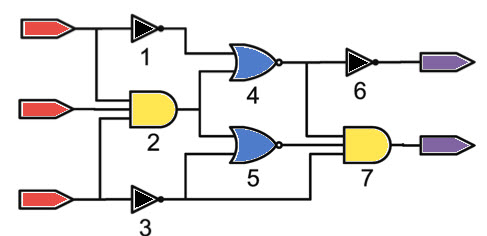
Unit 1 - Logic system and Gates
Introduction
A digital circuit is a circuit where the signal should be one of two discrete levels. Each level is interpreted as one of two different states (for instance, 0 or 1). These circuits built with transistors to make logic gates in order to execute Boolean logic operation. This logic is the base of digital electronics & computer processing. Digital circuits are less vulnerable to degradation in excellence than analog circuits. It is also simpler to execute error detection and rectification with digital signals. To make the routine process of designing these circuits, designers use EDA (electronic design automation) tools, a kind of software that develops the logic in a digital circuit.

A digital circuit is used to alter the waves into pulse waves. It measures a waveform thousand of times every second and stores the data in binary form. For instance, after 12msecs, a signal might be 2.4 volts high & after 14msecs, it might be at 2.6 volts. This circuit changes the volts and times into binary data, and the waves become a series of 1’s and 0’s. When the circuit has to generate sound from a speaker, it produces an o/p signal which is at 2.4 V after 12msec and at 2.6 V after 14msec, similar to the original wave

